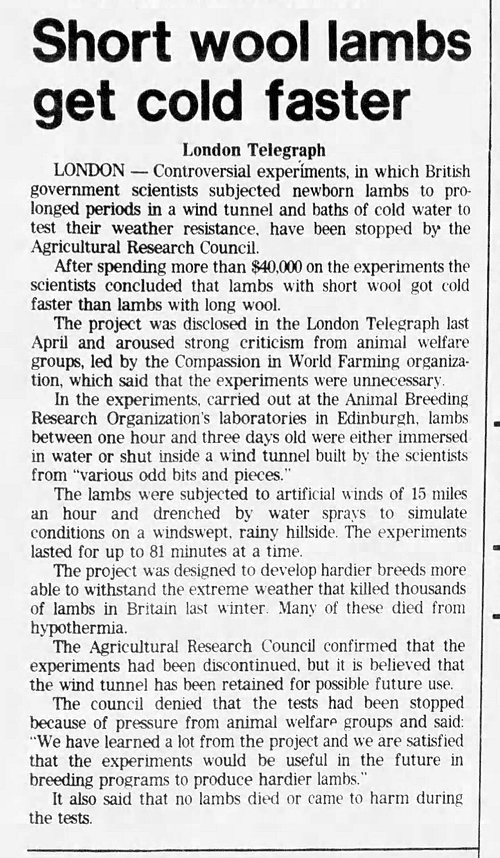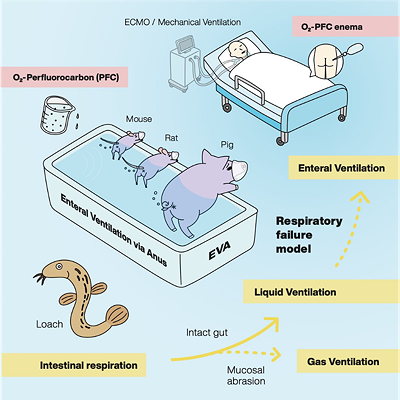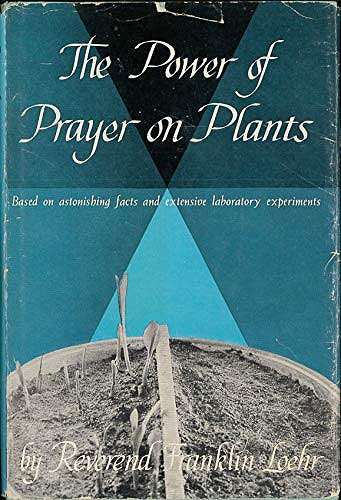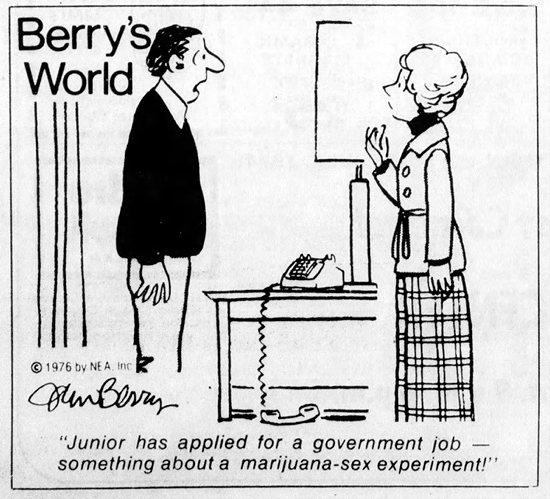Experiments
Fish-Operated Vehicle
Scientists at Israel's Ben-Gurion University of the Negev trained goldfish to drive a "fish-operated vehicle" or FOV. Details from scmp.com:So how long before your Uber driver is a fish?
More info: "From fish out of water to new insights on navigation mechanisms in animals"
Posted By: Alex - Thu Jan 13, 2022 -
Comments (3)
Category: Motor Vehicles, Experiments, Fish
Hand-Sniffing After Handshakes
Research by biologists Noam Sobel and Idan Frumin reveals that after a handshake people frequently lift their hand to their nose and sniff it. The researchers hypothesize that this is to smell the body odor of the other person.As described by Sarah Everts in her recent book The Joy of Sweat:
"When we showed them the videos, many of the subjects were completely shocked and disbelieving," Frumin told me. "Some thought we had doctored the videos - not that we had the computing power or the expertise to do so."
. . . When Frumin now goes to conferences, he sometimes stands back and watches people unconsciously sniffing. "Sometimes I catch myself doing it too. People tell me I've ruined handshakes for them, that they've become very self-conscious about shaking hands, especially with me."
The Weizmann Institute has more info. Sobel and Frumin's article about their research is in the journal eLife Sciences.
Posted By: Alex - Wed Dec 08, 2021 -
Comments (6)
Category: Science, Experiments, Smells and Odors
Lambs in a wind tunnel
After spending more than $40,000 on the experiments the scientists concluded that lambs with short wool got cold faster than lambs with long wool.
Sounds like Nobel Prize material there.

San Francisco Examiner - Dec 9, 1979
I'm not entirely sure, but Deborah Samson's research at the University of Edinburgh seems like it was the original study: "Genetic and physiological aspects of resistance to hypothermia in relation to neonatal lamb survival".
You can download at this link (pdf file) her doctoral thesis describing the research. As usual with things like this, the actual scientific study doesn't seem as wacky as the media report of it.
Update: While browsing through Samson's thesis, I discovered that she had a picture of the lamb "wind tunnel apparatus".

Posted By: Alex - Sun Dec 05, 2021 -
Comments (2)
Category: Experiments, Farming, 1970s
Jello Brainwaves
In 1974, Dr. Adrian Upton of McMaster University placed E.E.G. electrodes on a blob of lime jello and obtained positive readings. This indicated brain activity. He published his results in 1976 in the Medical Tribune.Upton was trying to demonstrate that when doctors use an E.E.G. to determine brain death, it can be difficult to obtain a perfectly flat readout, because the equipment picks up stray electrical activity from the surrounding environment. Or maybe he had discovered that jello is a sentient lifeform.
The Jell-O Gallery Museum in Le Roy, New York seems to prefer the latter conclusion. A brain-shaped jello mold on display at the museum bears the message: "A Bowl of Jell-O Gelatin and the Human Brain Have the Same Frequency of Brain Waves."

image source: Donna Goldstein, researchgate.net
More info: The Straight Dope


Wichita Eagle - Mar 8, 1976
Posted By: Alex - Mon Nov 15, 2021 -
Comments (7)
Category: Food, Jello, Experiments, 1970s, Brain
King Gustav III’s Coffee Experiment
According to what may be legend, King Gustav III of Sweden conducted that country's first clinical trial during the second half of the 18th century. He wanted to determine whether drinking coffee was bad for one's health. He firmly believed it was. The story is told on the website of Sweden's Uppsala University Library:
Barstow Desert Dispatch - Jan 7, 1991
Wikipedia notes that the authenticity of the coffee experiment story has been questioned. Though it doesn't say why.
As far as I can tell, the earliest English-language reference to the story appeared in a 1937 issue of The Science News-Letter. This account was then widely reprinted in newspapers (see below).
The Science News-Letter attributed the information to the Swedish-born botanist Bror Eric Dahlgren, who was a curator at the Field Museum in Chicago. Dahlgren did author a 1938 pamphlet about the history of coffee, which you can read online at the Biodiversity Heritage Library, but it doesn't include the story of King Gustav. I can't locate where else Dahlgren might have told the story of the coffee experiment, which makes it impossible to check his references.

The Sheboygan Press - May 28, 1938
Posted By: Alex - Thu Sep 23, 2021 -
Comments (5)
Category: Experiments, Coffee and other Legal Stimulants, Eighteenth Century
Butt Breathing Tubes
Recent studies suggest that it may be possible to supply oxygen to patients via a "butt breathing tube" rather than by the traditional tube down the throat. This new technique is also known as "enteral ventilation via anus". Caleb Kelly, in the journal Med (Jun 11, 2021) notes:The key to the technique is the use of an oxygen-saturated perfluorocarbon solution that can deliver enough oxygen to make it through the mucus membrane of the intestines and into the blood.
The technique has been demonstrated successfully on mice, rats, and pigs, but not yet on humans.
Josh Bloom, on the American Council of Science and Health site, observes:

image source: The Scientist
Posted By: Alex - Sat Sep 04, 2021 -
Comments (2)
Category: Science, Experiments
The Power of Prayer on Plants
According to the Rev. Franklin Loehr, prayer could supercharge the growth of plants. Pretty much any prayer would work. He detailed his argument in his 1959 book The Power of Prayer on Plants.When Richard Nixon was told of Loehr's results, he reportedly said, "That sounds like a good kind of thinking to me."
However, in 1961, a group of Harvard students tried to replicate Loehr's results and failed to do so. In fact, in their experiment the plants that weren't prayed for at all grew better than plants that were prayed for by either skeptics or believers.

More details from Newsweek (Apr 13, 1959):
Can prayer make plants grow faster and bigger? Skeptics think it laughable, scientists find it irrelevant, and farmers tend to rely on more mundane methods to increase their crops. But the Rev. Franklin Loehr is convinced that the answer is yes, and has just written a book, "The Power of Prayer on Plants," to tell why.
After five years and 900 experiments, the 46-year-old Presbyterian minister reports he and 150 members of his prayer group found that prayed-for wheat and corn seeds grew into bigger seedlings than ones which got no prayer or outright negative prayer. Commenting on their methods last week in his Los Angeles home, Mr. Loehr explained that they used every kin of prayer and found every one effective to a degree.
"There were silent and spoken prayers," he continued, "those to loved ones, and the humble prayer straight to God. But mostly people just talked to the plants, loved them, or scolded them. First I tried buddying up to them, and then I observed that the people getting better results were approaching the plants on their own level of consciousness."
Picking up a copy of the book, he pointed to the jacket, which shows a lone, stunted shoot on the no-prayer side of an experimental seedbed. "He wasn't supposed to be there," explained Mr. Loehr, "so we blighted him with three bursts of negative command."
Mr. Loehr dropped the experiments two years ago, having persuaded himself, at least, of their validity. He is now concentrating on "soul dynamics" prayer for people—not, of course, to make them grow faster and bigger. "The fact is," he concluded, "we used plants to test prayer just as the artificial heart is tested in dogs instead of humans."

Along similar lines, see our previous post "Does holy water help radishes grow better?"
Posted By: Alex - Fri Aug 06, 2021 -
Comments (2)
Category: Religion, Experiments, Books, 1950s
The Marijuana Sex Experiment
1975: There was a public hoo-ha when details of Dr. Harris Rubin's planned "marijuana sex study" leaked to the press. As described in the St. Louis Post-Dispatch (Dec 7, 1975):The New Scientist noted that, despite the moral outrage, the purpose of the study was actually to generate anti-marijuana propaganda by demonstrating that marijuana inhibits sexual response. At least, that was the anticipated result. But the experiment was never conducted.

Dr. Harris Rubin of the Southern Illinois University School of Medicine at Carbondale
Morton Hunt gives more details in his 1999 book The New Know-Nothings:
On July 18, the Bloomington, Illinois, Daily Pantagraph, which had somehow become aware of the study, ran an article about it, and from then on Rubin's project was in trouble. Newspapers in Illinois, St. Louis, Washington, Chicago, and many other cities ran stories about what quickly became known as the "sex-pot study" or "pot-sex study," a topic so interesting that they ran follow-up stories about it for many months. Displaying suitable outrage, the Christian Citizens Lobby, Illinois governor Daniel Walker, a federal prosecutor, and various Illinois state officials all denounced the study, calling it "disgusing," "pornography," "obscene," and "garbage," and threatening to take action against Rubin.
This was mere growling and snapping, but Congress had the teeth wherewith to bite. Senators William Proxmire and Thomas Eagleton, Democrats but sexual conservatives, attacked it, as did Representative Robert Michel, the ranking Republican member of the House Appropriations subcommittee. Although the secretary of HEW and the president's National Advisory Council on Drug Abuse defended and supported the project, Michel sought to prevent NIDA from funding the Rubin study by tucking an amendment to that effect in the $12.7 billion-dollar 1976 Supplemental Appropriations Bill for HEW, and Senators Proxmire and Warren Magnuson inserted a similar provision into the Senate's version of the bill. The funding of HEW was so crucial to the national well-being that both houses passed the bill with the anti-Rubin provision intact. President Ford signed it into law on May 31, 1976, keeping the vast Social Security system, NIH, and other essential endeavors going—and cutting off Rubin's minuscule funding and putting an end to his research. Rubin had already gathered the alcohol data and he eventually published his results, but the marijuana study died a-borning.

The Sedalia Democrat - Feb 4, 1976
Posted By: Alex - Sat Jul 31, 2021 -
Comments (6)
Category: Drugs, Smoking and Tobacco, Experiments, 1970s, Moral Panics and Public Hysteria
An Experiment on Eye Process
From The Art and Science of Embalming (1896) by Carl Barnes.The illustration shows an experiment by the embalmer W.W. Harris to test the efficacy of injecting embalming fluid through needles inserted at the corners of the eyes. Harris showed that the fluid would come out the veins and arteries in the neck— and if the head were still attached to a body, would then presumably spread throughout the rest of the corpse.

Posted By: Alex - Sun Jun 06, 2021 -
Comments (2)
Category: Death, Experiments, Eyes and Vision
Dr. Munch’s Marijuana Madness
1938: Dr. James Clyde Munch described to his students at Temple University what happened when he smoked "a handful of reefers" as an experiment.I'm thinking there may have been something more than just marijuana in those cigarettes.

Time - Apr 11, 1938
Munch liked his story about the disorienting effects of marijuana so much that he repeated it at several criminal trials.

New York Daily News - Apr 8, 1938
Posted By: Alex - Fri May 14, 2021 -
Comments (4)
Category: Drugs, Smoking and Tobacco, Experiments, 1930s

| Who We Are |
|---|
| Alex Boese Alex is the creator and curator of the Museum of Hoaxes. He's also the author of various weird, non-fiction, science-themed books such as Elephants on Acid and Psychedelic Apes. Paul Di Filippo Paul has been paid to put weird ideas into fictional form for over thirty years, in his career as a noted science fiction writer. He has recently begun blogging on many curious topics with three fellow writers at The Inferior 4+1. Contact Us |




